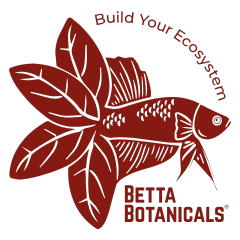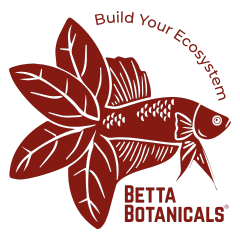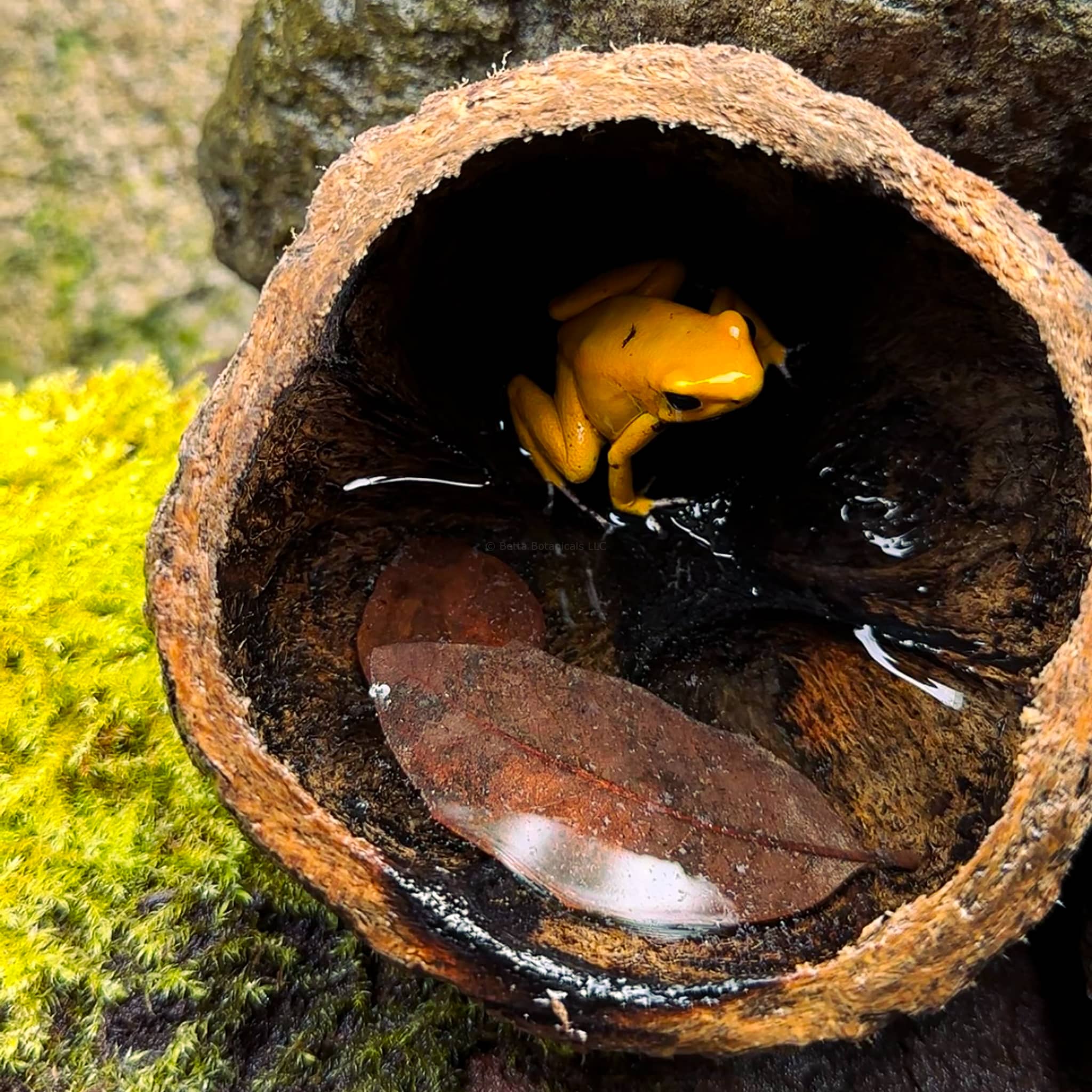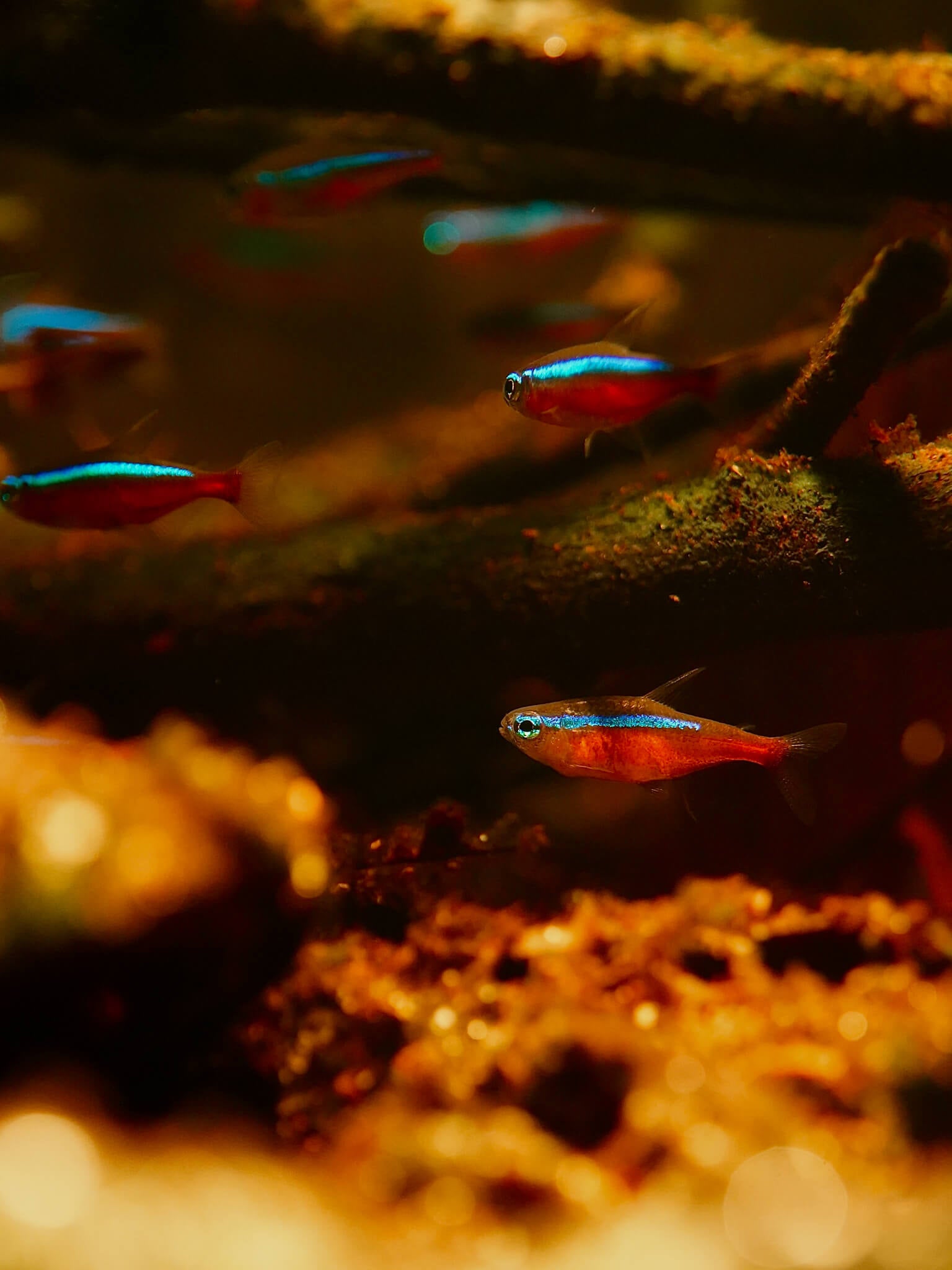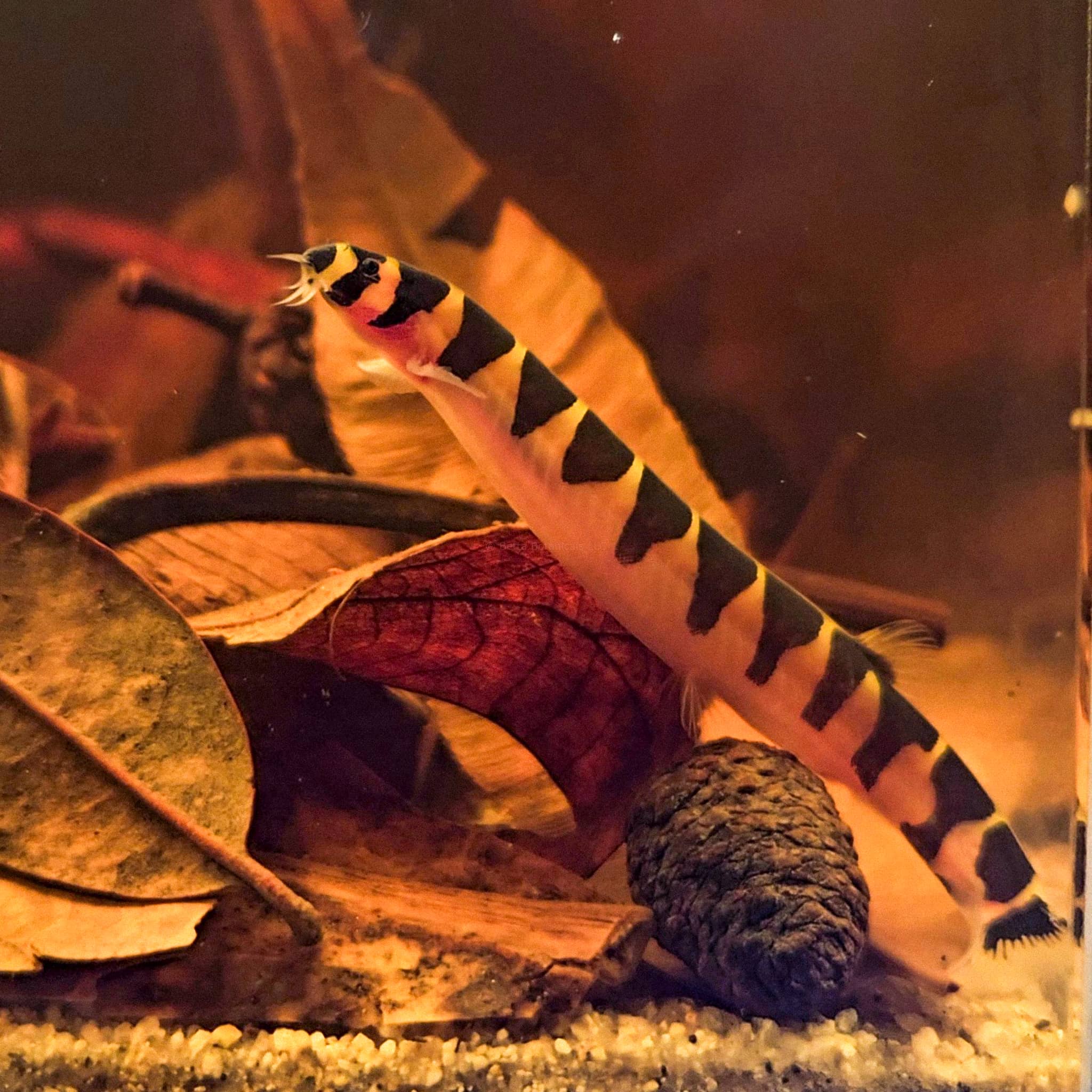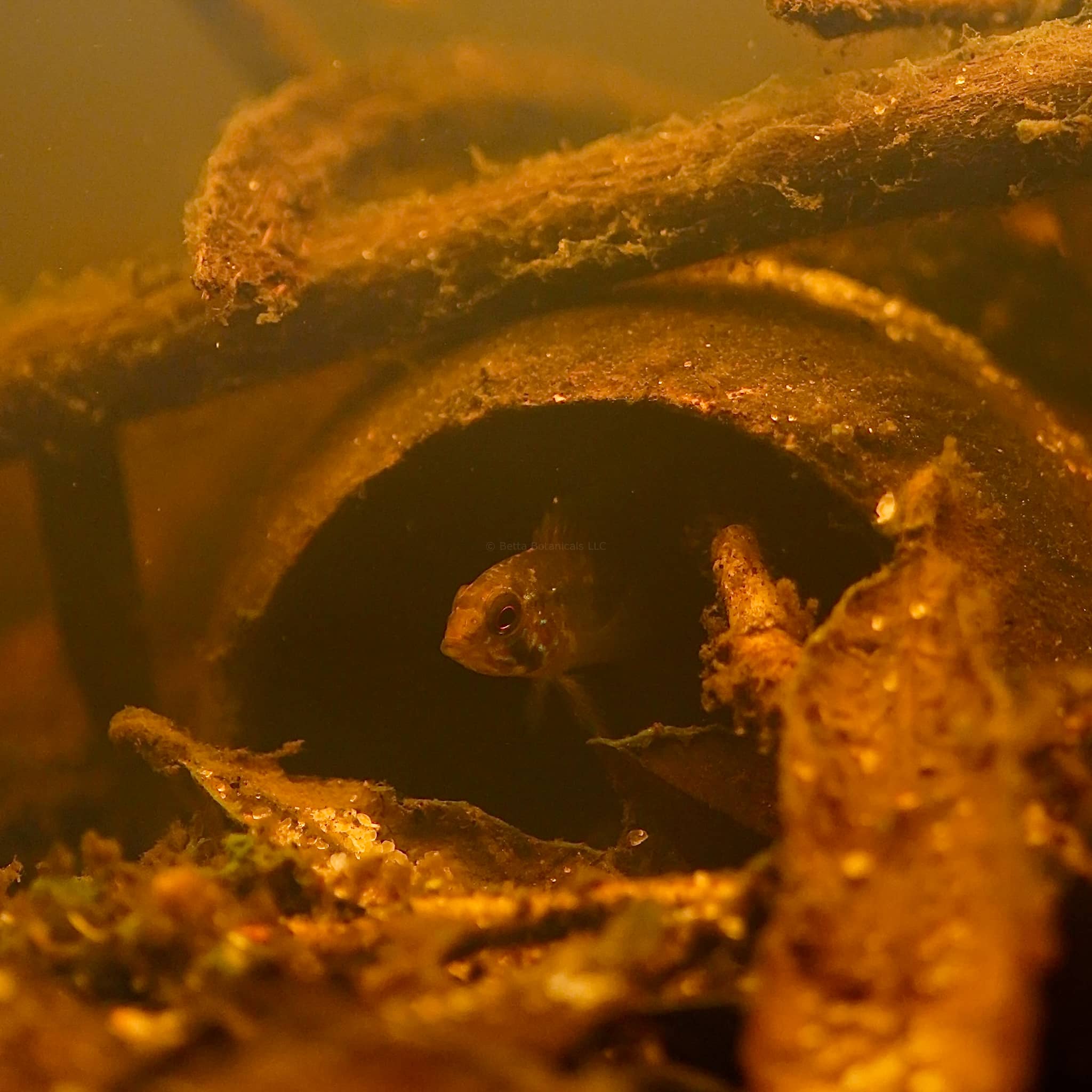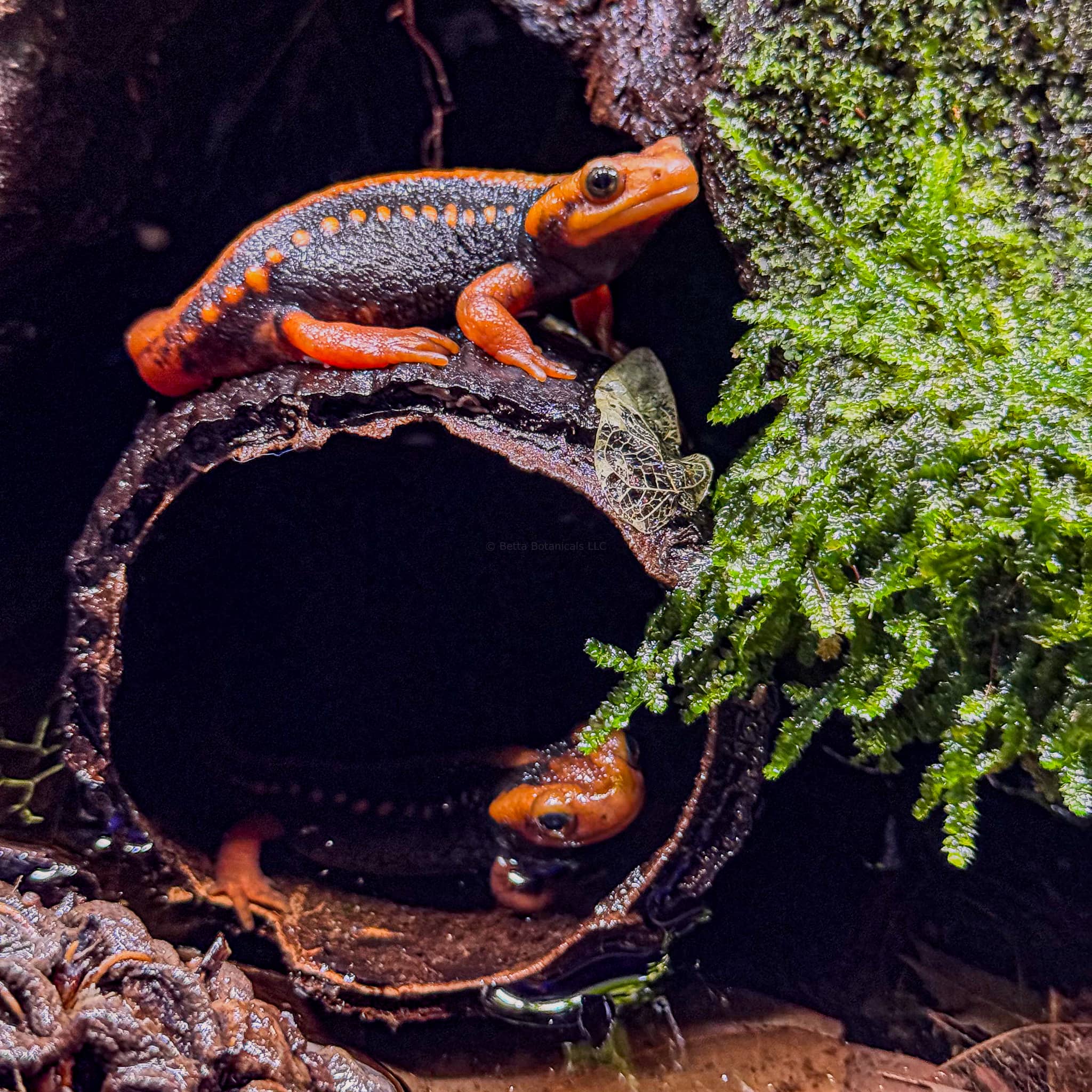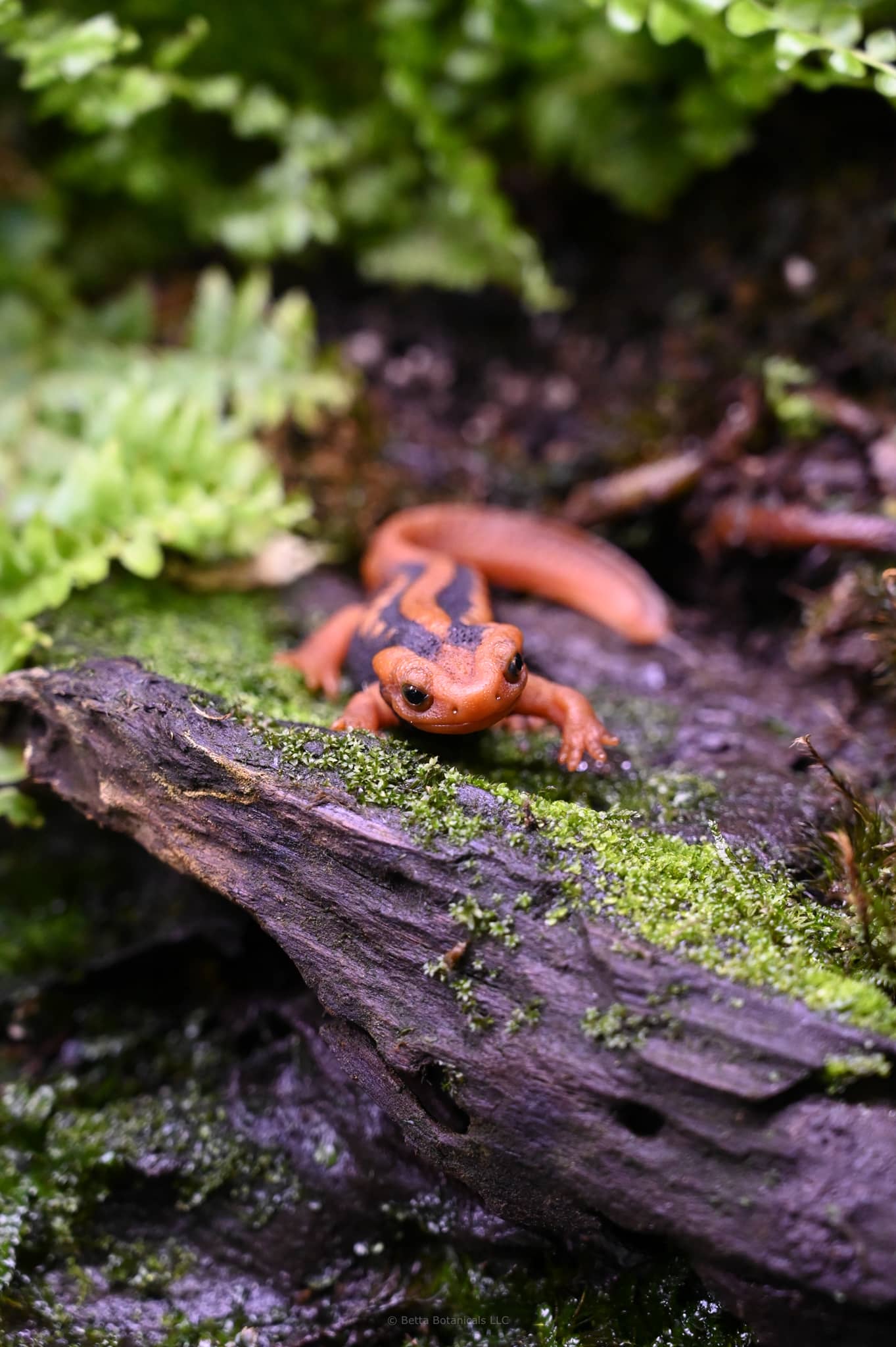
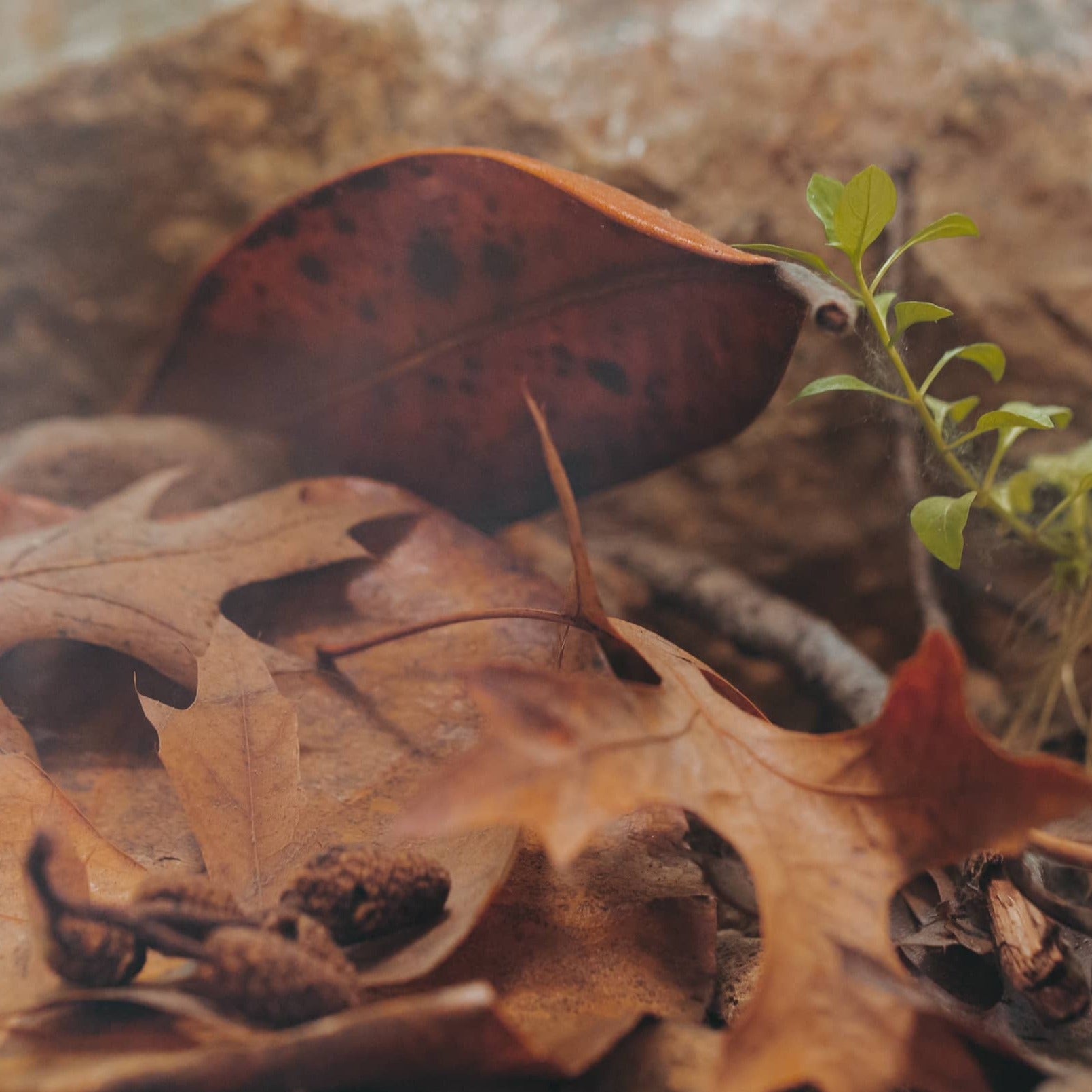
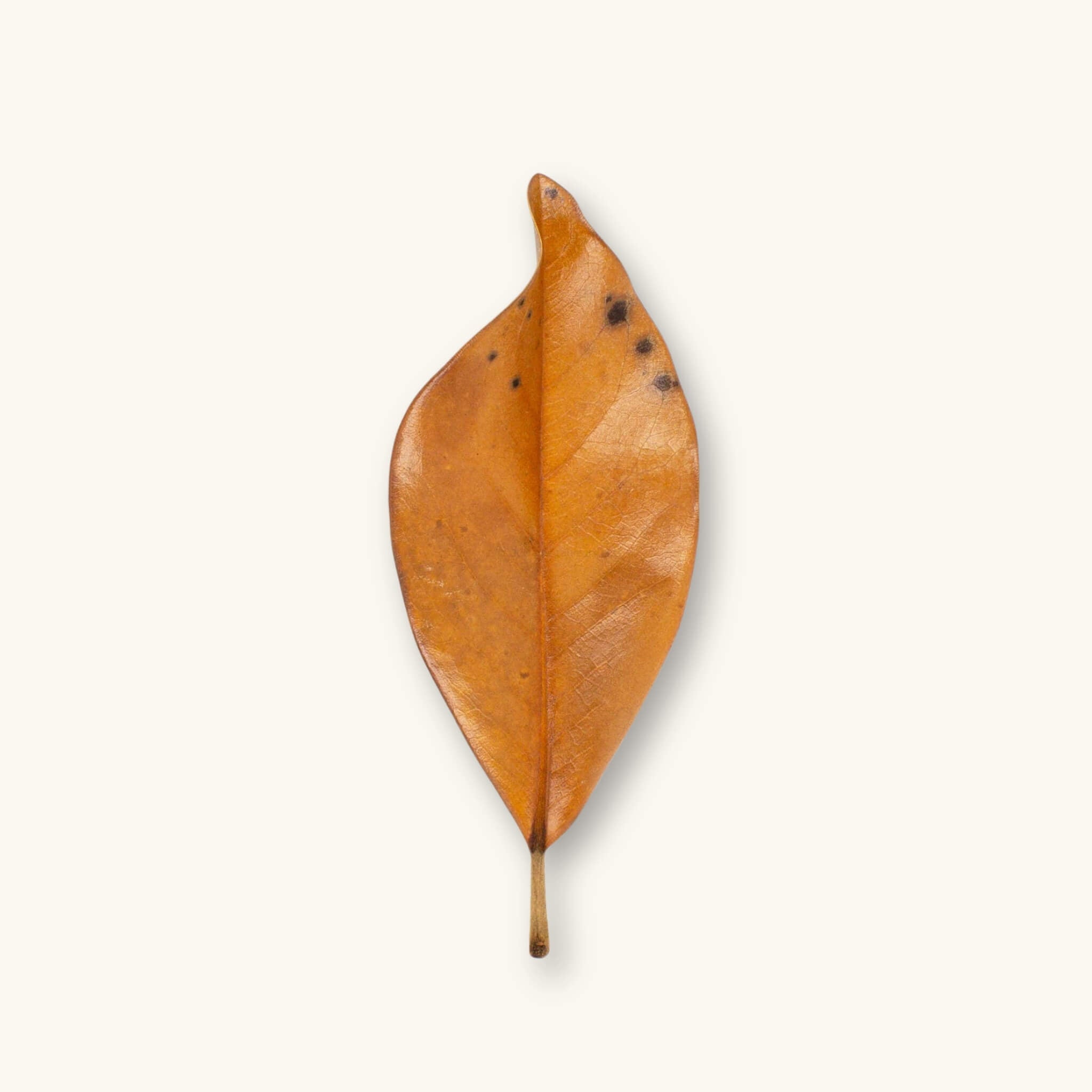
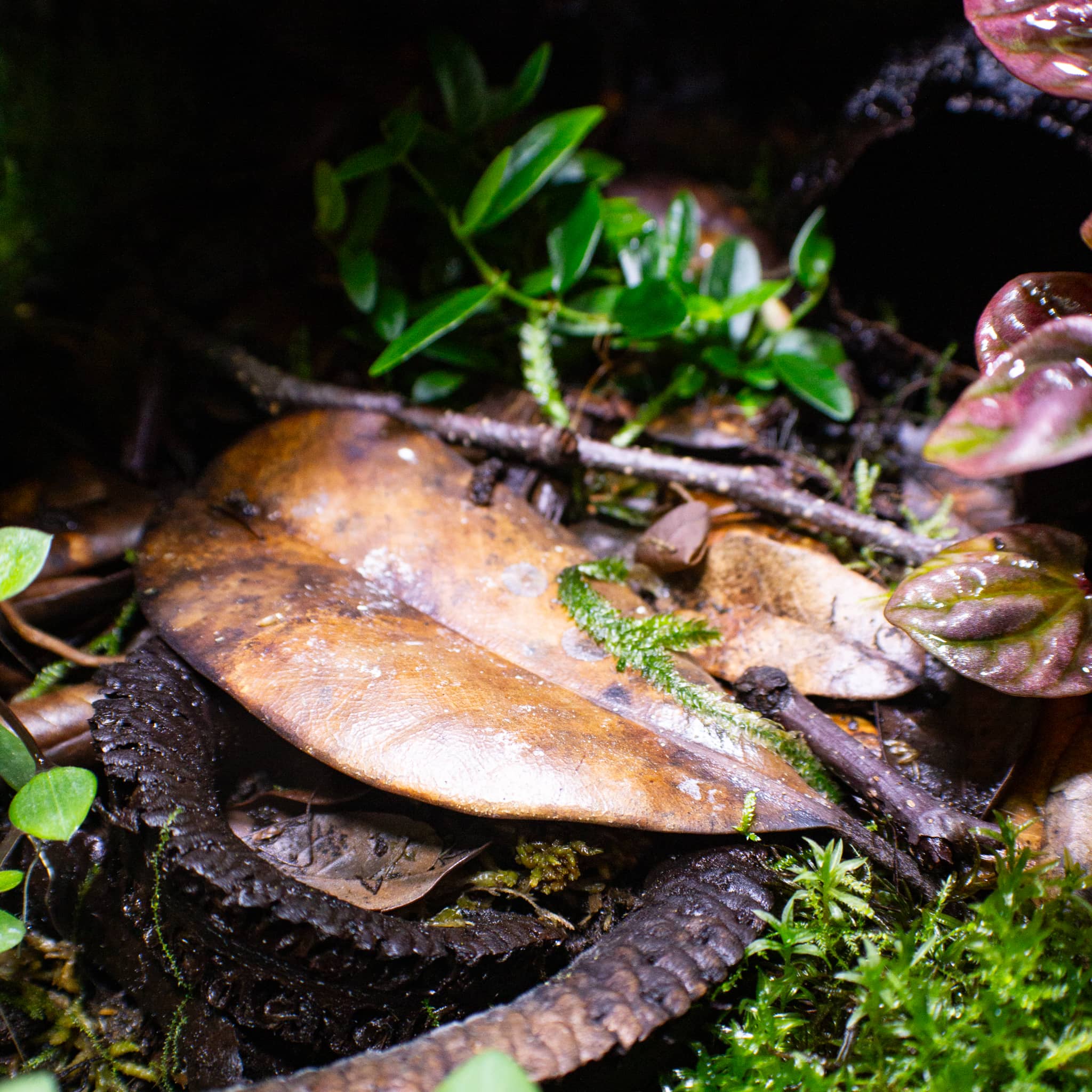
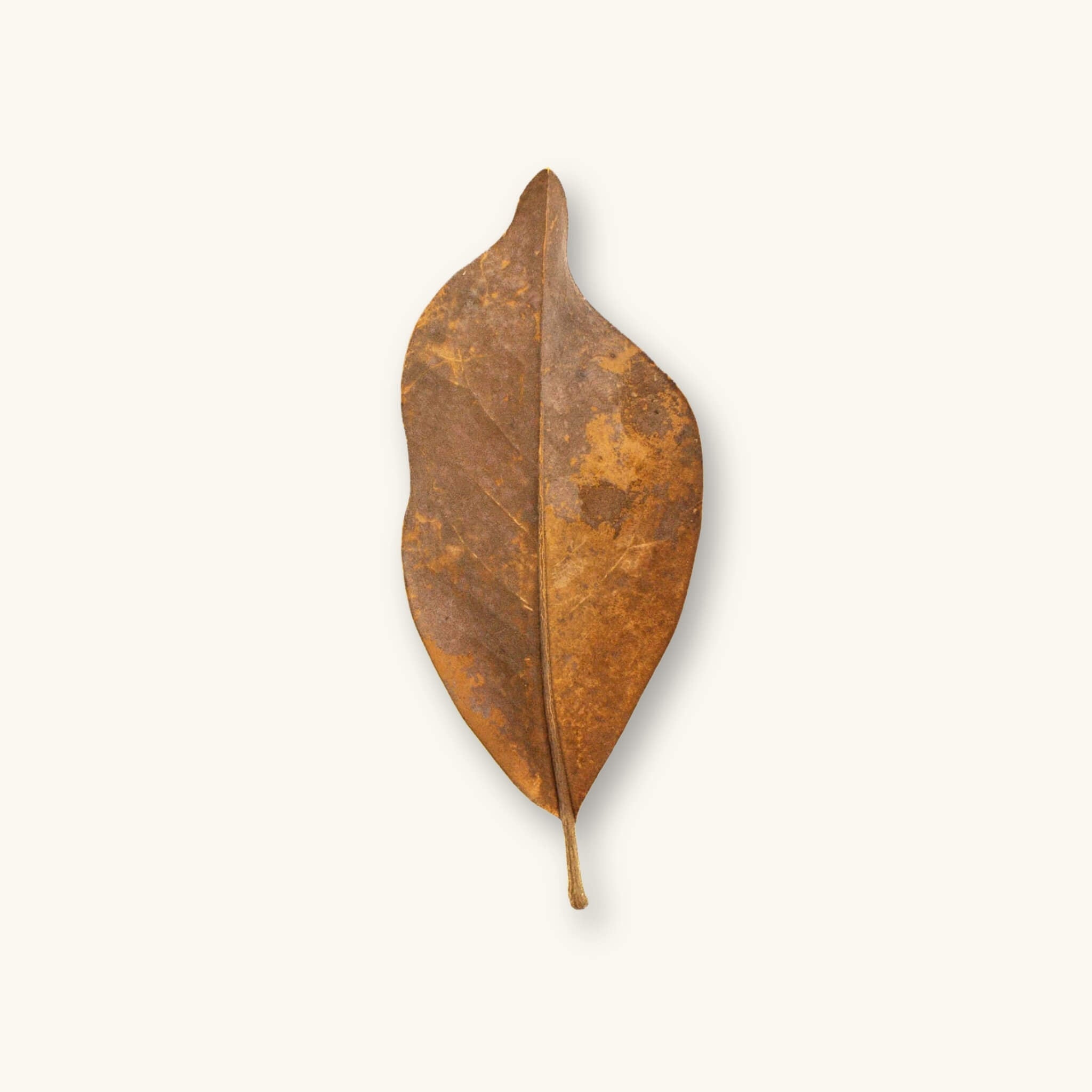

Southern Magnolia Leaves | Magnolia grandiflora
Southern Magnolia Leaves on the Surface:
Southern Magnolia leaves (Magnolia grandiflora) come from an evergreen broadleaf tree native to the Southeastern United States, where they are a defining part of lowland forests and coastal woodlands. Their thick, waxy cuticles break down slowly underwater, first softening and then revealing intricate leaf skeletons in the leaf litter bed. In botanical method, blackwater, and biotope aquariums, these leaves provide a long-lasting source of tannins and humic substances, biofilms, and shelter for invertebrates and small fishes. They are among the best 'feeder botanicals' for shrimp, snails, and rasping fish, an important player amongst the foundations of a leaf litter bed.
Essential Details
- Tannin Level: Moderate to high
- Tint Color: Warm amber to tea-yellow
- Durability: Durable, slowly softens and decomposes over several months, often leaving persistent leaf skeletons
- Habitat Location: North America (harvested from cultivated and urban landscapes within the Southeastern United States)
- Optimal For: Bettas, gouramis, dwarf cichlids, catfish, rasboras, shrimp, dart frogs, geckos, isopods, and other species from leaf-litter or blackwater habitats
- Use with Caution: None; suitable for all ecosystems
- Size Range: Approximately 2–8 inches long and 1–4 inches wide
- Quantities: 20+ Southern Magnolia leaves per bag
Southern Magnolia Leaves for Aquariums & Vivariums
Southern Magnolia leaves are ideal for aquarists who want a generic tropical, long-lasting leaf litter to help recreate the natural water conditions and habitats from around the globe. Their thick, waxy cuticle slows decomposition, which allows fungi and biofilms to colonize the surface over time. These microbial layers become a natural grazing resource for shrimp, snails, and small fish that rasp across leaf litter as their preferred feeding method.
As the leaves age, they gradually release tannins and other phenolic compounds that gently tint the water and slightly lower the pH. The slow breakdown contributes to persistent detritus layers that help build the “perpetual substrate”, where old material is never fully removed but instead becomes the foundation for new ecological growth.
In vivariums and bioactive enclosures, Southern Magnolia leaves hold their structure while offering shelter for isopods, springtails, and other detritivores. Their durability makes them an excellent backbone to the forest floor, especially when paired with faster-decomposing leaves that are consumed more quickly. The undersides of this leaf litter are especially preferred by springtails, which are a critical food source for froglets and smaller vivarium inhabitants.
Beneath the Leaves: Magnolia grandiflora in the Wild
In the wild, Southern Magnolia grows along humid river corridors, floodplains, and coastal forests from Virginia through the Gulf Coast and into East Texas. Season after season, its heavy, leathery leaves fall and gather in thick layers beneath the canopy, trapping moisture and forming cool, shaded pockets on the forest floor. Insects, arthropods, and microbes work through this litter, breaking it down into rich humus that feeds roots, fungi, and understory plants.
This cycle of falling foliage, gradual decay, and nutrient return is mirrored in the aquarium when Magnolia leaves are allowed to settle, soften, and integrate into the substrate. Instead of functioning as decoration, they participate in the ecosystem, inviting aquarists to lean into natural processes and let ecological succession enhance the stability of the home aquarium and vivarium.
Sustainability Note:
This product’s packaging is home compostable.
Just like the botanicals inside, it will break down naturally and return to the soil because what supports your ecosystem should minimally impact our planet.
Not for human consumption. Preparation required.
This is a natural product, so variation in color, shape, and texture is expected.

Southern Magnolia Leaves | Magnolia grandiflora
Home is getting more natural
While the aesthetic appeal of botanicals and tinted water can be quite attractive to us, the recreation of nature to emulate water conditions, feeding patterns, spawning displays, and territory building are the true benefits botanicals provide to our critters.
Botanical FAQs
Compostable Packaging Promise
Our packaging is designed to return safely to the Earth, just like the botanicals inside. Every bag is BPA- and Phthalate-free, GMO-free, and contains no animal products. Each meets ASTM D6400 composting standards, ensuring it can fully break down in a home compost bin.
What are the Fluffy White Growths on my Botanicals?
That’s biofilm and fungi—what we call the “goo phase.” It’s one of the clearest signs that your aquarium is alive and functioning. These growths wax and wane naturally as botanicals decompose. They’re harmless, even beneficial, and will disappear on their own once microbial populations stabilize.
Will botanicals lower the pH of my water?
That depends entirely on your source water. In very soft or RODI water, botanicals can gradually lower pH as tannins and humic substances accumulate. In medium to hard tap water, buffering capacity often resists these shifts, and you may not notice much change. At Betta Botanicals HQ, our very hard water (350+ ppm) shows almost no pH change unless we use botanicals like Alder Cones or Macaranga Leaves.
When should I replace leaves or pods in my tank?
We recommend allowing botanicals to fully break down into detritus, since this fuels microbial life and enriches the substrate. You can remove them once they stop tinting the water, but you’ll lose some of their ecological benefits. Each time you add new botanicals, follow proper preparation and observe your livestock until you learn your aquarium’s rhythm.
Are your products just for bettas?
Nope. Our botanicals are safe for almost all aquariums, terrariums, vivariums, and paludariums. The only exceptions are goldfish and axolotls, which may ingest small pods like alder cones or casuarina cones. For those species, we recommend large leaves such as Indian Almond, Loquat, or Jackfruit.
What are Tannins?
Tannins are natural compounds released by leaves, seed pods, and bark as they decompose in water. They soften water, gently lower pH, and create the characteristic tea-stained tint found in blackwater habitats. But their role goes far beyond color—tannins fuel beneficial bacteria, fungi, and biofilms, which form the foundation of a healthy ecosystem. They also offer mild antifungal benefits and help reduce stress in fish by replicating the natural conditions they’ve evolved in. At their core, tannins are plant-derived antioxidants that connect your aquarium to the same processes at work in wild flooded forests and streams.
